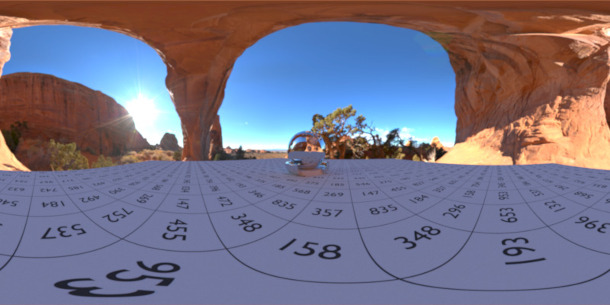LuxCoreRender 2.5 and BlendLuxCore 2.5 ship

The LuxCoreRender team has released version 2.5 of the open-source physically based renderer, adding support for hardware-accelerated ray tracing on Nvidia RTX GPUs.
The release also adds new stereo cameras for rendering virtual reality content, support for custom Bokeh effects, holdout and two-sided materials, and new options for randomising texture tiling and mapping.
Blender integration plugin BlendLuxCore gets support for OptiX viewport denoising and a light group editor.
The update also reintroduces the renderer’s 3ds Max integration plugin, with an early access build, MaxToLux 0.8, available to download alongside the software itself.
A hybrid CPU/GPU unbiased render engine, formerly known as LuxRender
Formerly known as LuxRender, LuxCoreRender was rebooted in 2018 with a change of name, a new project website, forum and online documentation.
It’s a physically based render engine with a range of production features and, as of LuxCoreRender 2.0, supports hybrid C++/OpenCL rendering on CPUs and GPUs.
The 2.0 release also reduced the number of DCC tools into which the renderer is integrated: whereas LuxRender used to have plugins for a range of apps, LuxCoreRender initially only supported Blender.

LuxCoreRender 2.5: RTX-accelerated ray tracing, better Bokeh effects, and new stereo cameras
LuxCoreRender 2.5 is a pretty wide-ranging update, but arguably the biggest change is support for hardware-accelerated ray tracing on current-gen Nvidia RTX GPUs.
The resulting speed boost scales with scene complexity, with the release notes citing an 18% speed increase on a scene with 4 million triangles, and a 604% increase on a scene with 10 million triangles.
The engine also now supports non-uniform distributions for Bokeh effects, including those based on custom images; and the option to stretch Bokeh effects horizontally or vertically to mimic anamorphic lenses.
Other rendering changes include a finer-grained set of AOVs for diffuse, glossy and specular reflections, making it possible to separate out reflected and transmitted light, as well as direct and indirect lighting.
There are also new 180° and 360° stereo cameras for rendering virtual reality content.
LuxCoreRender 2.5: material and texture updates
The release also introduces two new material types: a two-sided material, and a holdout material to help composite 3D elements rendered in LuxCoreRender into photographic backplates.
There are also new wireframe and distort textures, the latter used to distort one texture map with another; and a new texture bombing option to distribute a stencil map randomly across a surface.
Users also get new options for randomising tiling of textures, helping to break up repeating patterns; and for randomising texture mapping settings across objects or instances in a scene.
BlendLuxCore 2.5: OptiX viewport denoising and light group editing
As well as the new features in the core renderer, Blender users get support for render denoising via Nvidia’s GPU-based OptiX denoiser in viewport previews as well as final-quality output.
There is also a new Light Group Editor: it is now possible to edit the brightness and colour of groups of lights in a compositor node group, as shown above, making it easier to test variant looks for a scene.
Workflow changes include a new colour temperature slider in the light properties, and a range of smaller quality-of-life improvements, listed in the links at the foot of the story.

3ds Max integration MaxToLux available in early access
In addition, the release officially restores the renderer’s old 3ds Max integration, at least in early access.
Although the MaxToLux plugin has been in development since 2019, it has now progressed far enough for the latest build to be listed on the LuxCoreRender download page alongside the Blender plugin.
System requirements and availability
LuxCoreRender 2.5 is available under an Apache 2.0 licence for Windows, Linux and macOS.
BlendLuxCore 2.5 is compatible with Blender 2.82-2.92; MaxToLux 0.8 with 3ds Max 2019-2021.
Read an overview of the new features on the LuxCoreRender website
